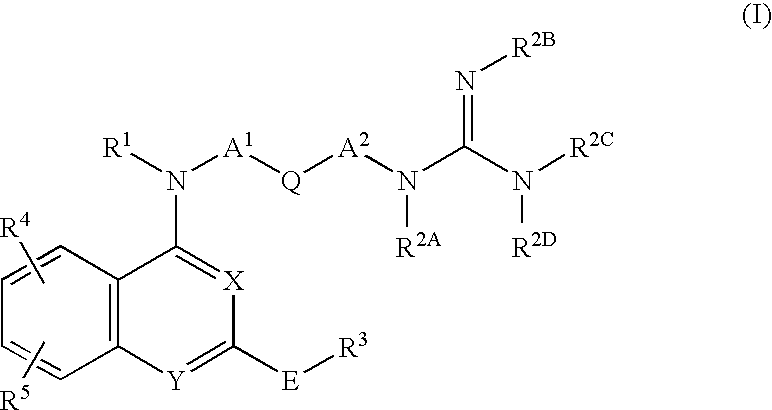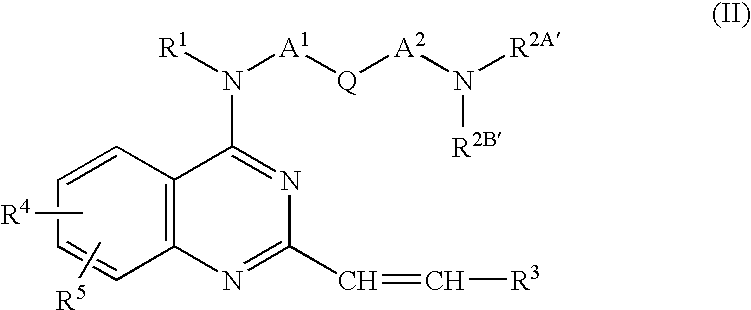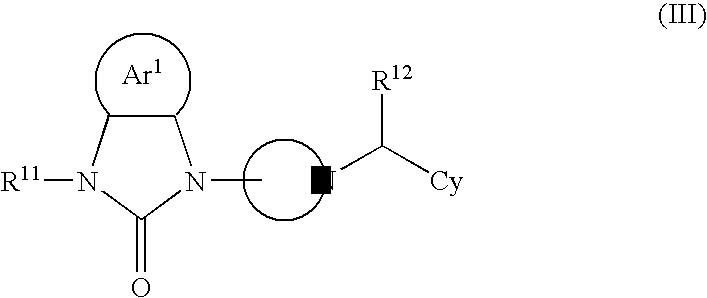Antipruritics
a technology of antipruritic and anti-inflammatory drugs, applied in the field of antipruritic, can solve the problems of ineffective treatment, large problem of patients with these diseases, and almost no
- Summary
- Abstract
- Description
- Claims
- Application Information
AI Technical Summary
Problems solved by technology
Method used
Image
Examples
reference example 2
[0433] (1R,2S,4S)-4-tert-butoxycarbonylamino-2-methylcyclohexylamine
[0434] Step 1
[0435] Trans-4-benzoyloxy-N-tert-butoxycarbonyl-cis-3-methylcyclohexylamin-e
[0436] To a solution of 0.54 g of trans-4-tert-butoxycarbonylamino -trans-2-methylcyclohexanol in 15 ml of methylene chloride, 0.358 g of triethylamine and 0.356 ml of benzoyl chloride were added dropwise under ice cooling, followed by stirring at room temperature for 15 hours. After adding water, the reaction solution was extracted with methylene chloride and then concentrated while drying over magnesium sulfate. The residue was purified by silica gel column chromatography (n-hexane:ethyl acetate=5:1) to obtain 0.61 g of the desired compound.
[0437] Step 2
[0438] (1S,2S,4S)-4-tert-butoxycarbonylamino-2-methylcyclohexanol
[0439] Trans-4-benzoyloxy-N-tert-butoxycarbonyl-cis-3-methylcyclohexylamin-e was subjected to optical resolution using an optically active column (CHIRALPAK AD column manufactured by DAICEL CHEMICAL INDUSTRIES, L....
reference example 3
[0446] (1S,2R,4R)-4-tert-butoxycarbonylamino-2-methylcyclohexylamine
[0447] In the same manner as in the steps 2, 3 and 4 of Reference Example 2, the desired compound was obtained from the posterior fraction [.alpha.].sup.20.sub.D -39.94(c=1.0,methanol) obtained in the step 2 of Reference Example 2.
example 1
[0448] Cis-4-amino-cis-2-methyl-N-{6-methyl-2-[2-(2-pyridyl)ethenyl]quinaz-olin-4-yl}cyclohexylamine trihydrochloride
[0449] Step 1
[0450] Cis-4-tert-butoxycarbonylamino-cis-2-methyl-N-{6-methyl-2-[2-(2-pyr-idyl)ethenyl]quinazolin-4-yl}cyclohexylamine
[0451] To a solution of 70 mg of 4-chloro-6-methyl-2-[2-(2-pyridyl)ethenyl-]quinazoline, 60 mg of cis-4-tert-butoxycarbonylamino-cis-2-methylcyclohex-ylamine and 100 mg of triethylamine in 10 ml of toluene, a catalytic amount of 4-dimethylaminopyridine was added and the mixture was heated at reflux for 24 hours. After the reaction solution was distilled off, the residue was combined with water, extracted with chloroform and then concentrated while drying over magnesium sulfate. The residue was purified by silica gel column chromatography (chloroform:methanol=50:1) to obtain 50 mg of the desired compound.
[0452] Step 2
[0453] Cis-4-amino-cis-2-methyl-N-{6-methyl-2-[2-(2-pyridyl)ethenyl]quinaz-olin-4-yl}cyclohexylamine trihydrochloride
[0454] ...
PUM
| Property | Measurement | Unit |
|---|---|---|
| diameter | aaaaa | aaaaa |
| pH | aaaaa | aaaaa |
| pore size | aaaaa | aaaaa |
Abstract
Description
Claims
Application Information
 Login to View More
Login to View More - R&D
- Intellectual Property
- Life Sciences
- Materials
- Tech Scout
- Unparalleled Data Quality
- Higher Quality Content
- 60% Fewer Hallucinations
Browse by: Latest US Patents, China's latest patents, Technical Efficacy Thesaurus, Application Domain, Technology Topic, Popular Technical Reports.
© 2025 PatSnap. All rights reserved.Legal|Privacy policy|Modern Slavery Act Transparency Statement|Sitemap|About US| Contact US: help@patsnap.com



